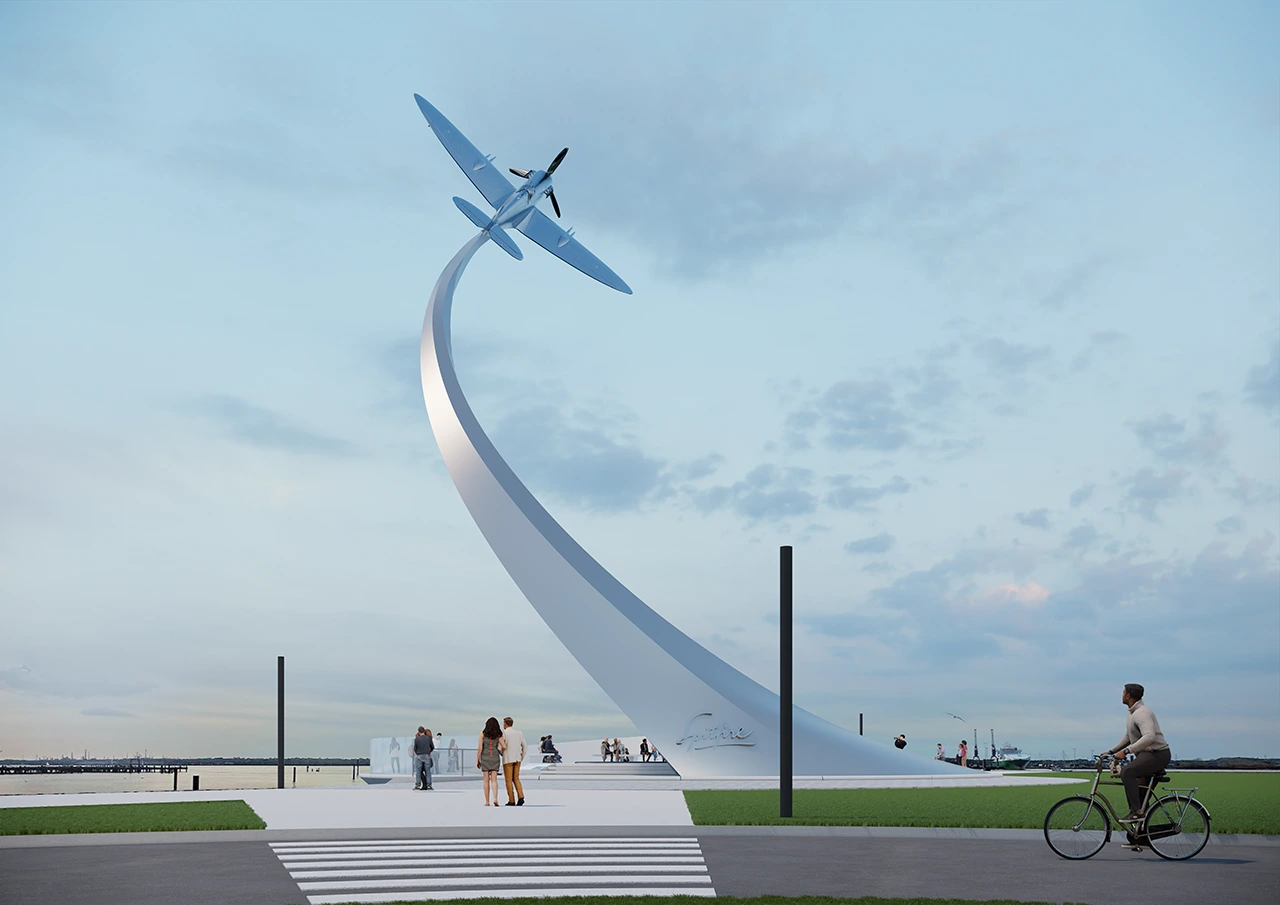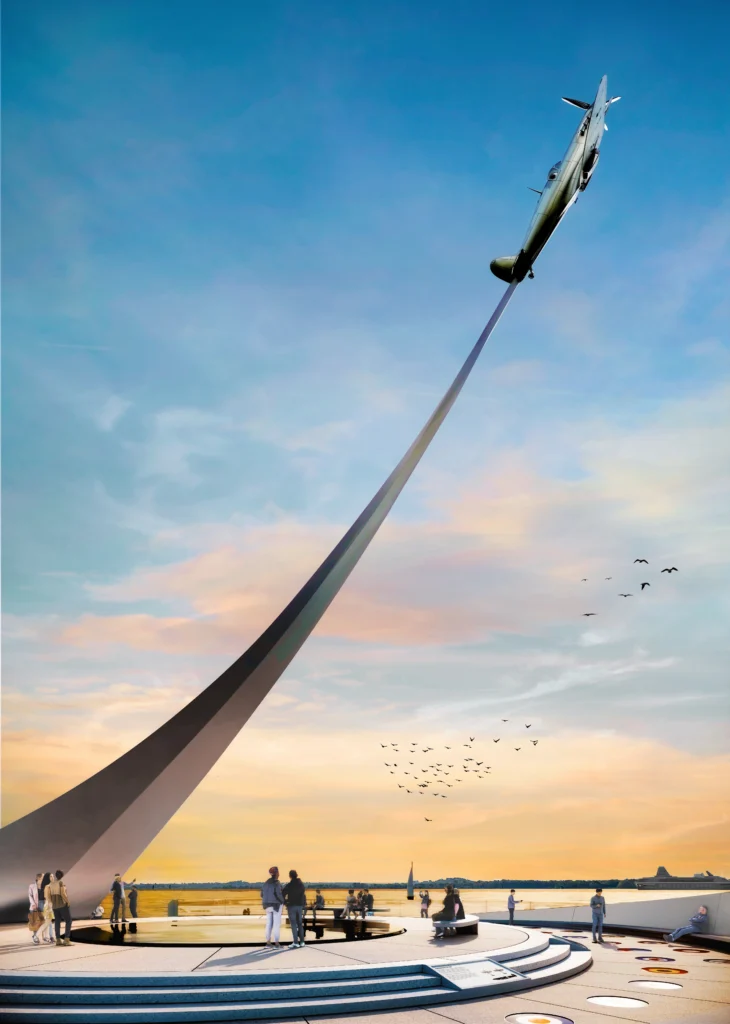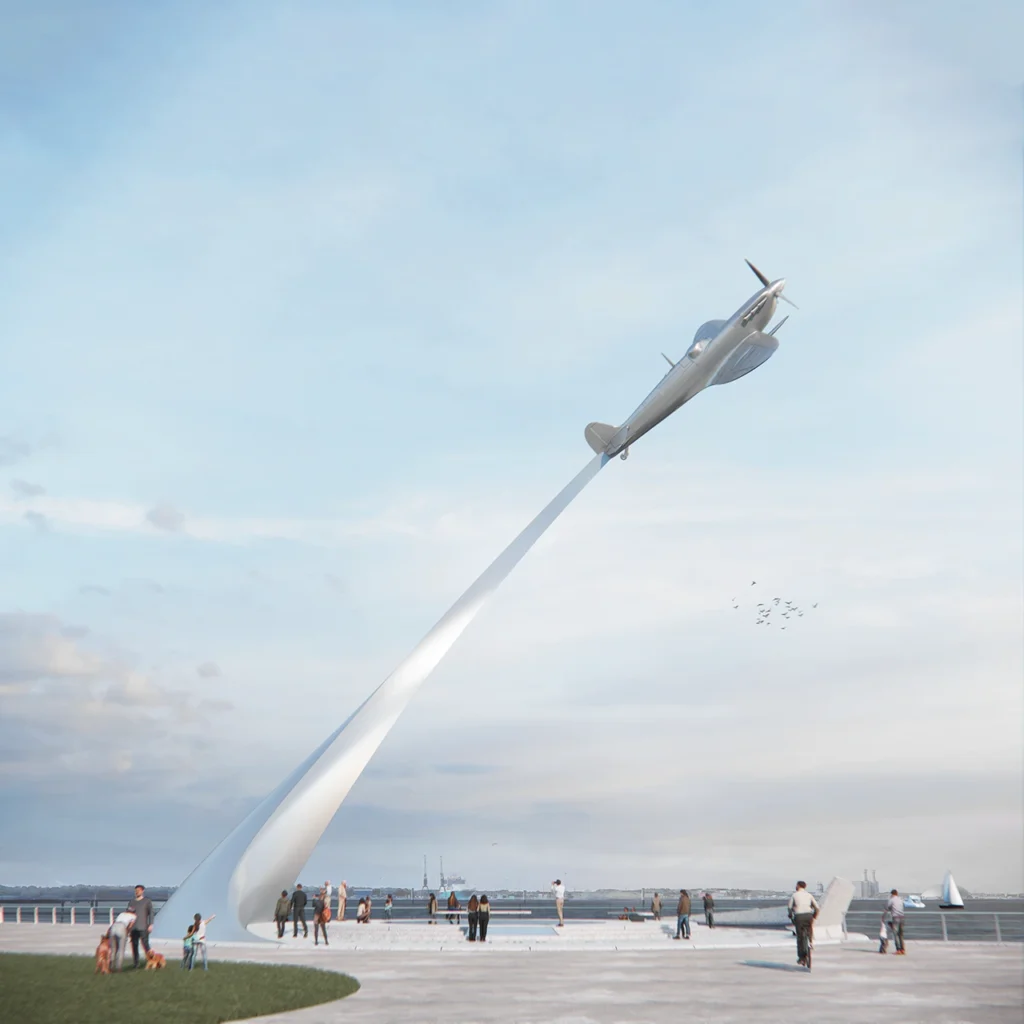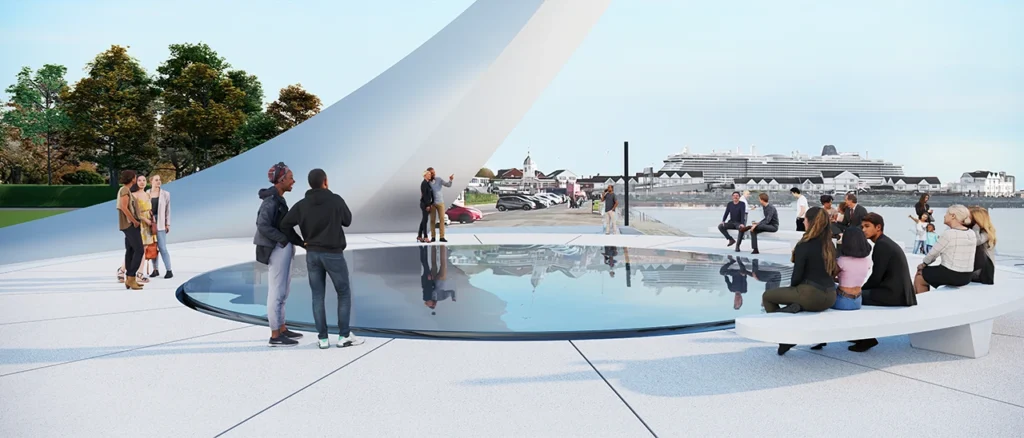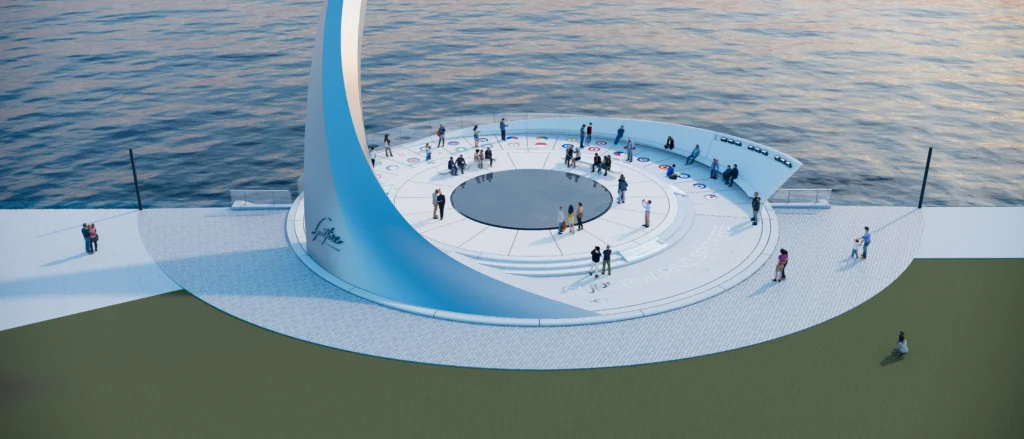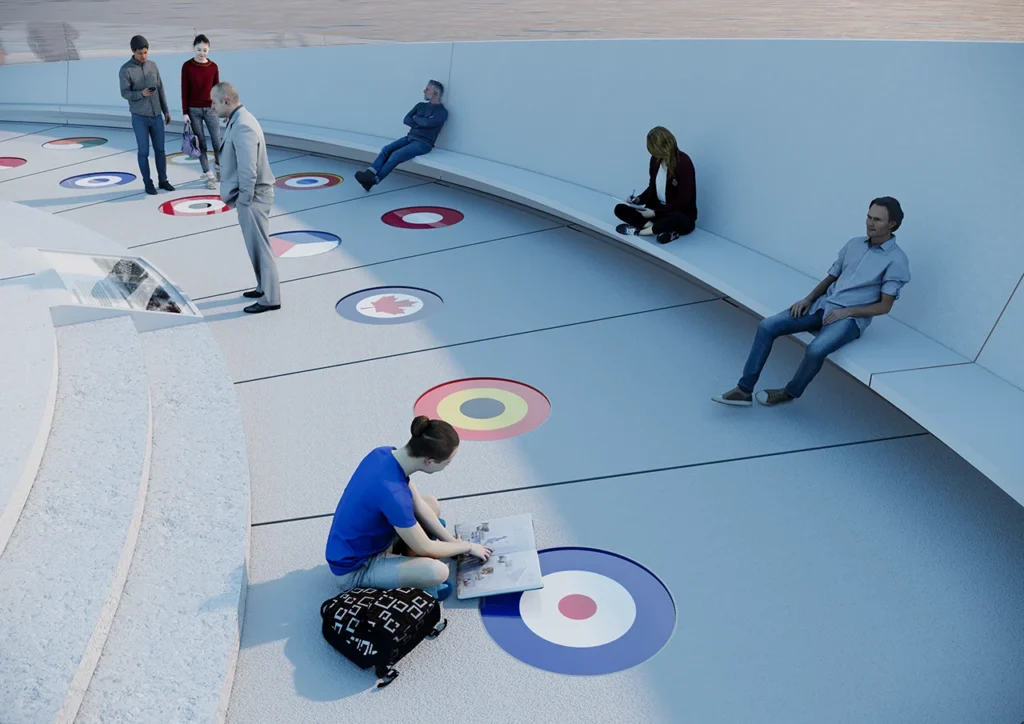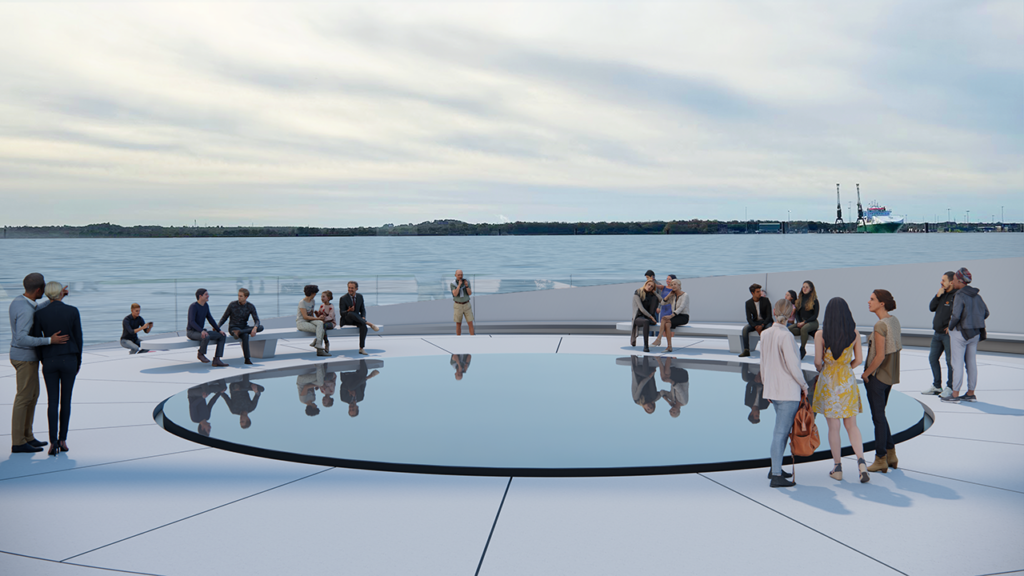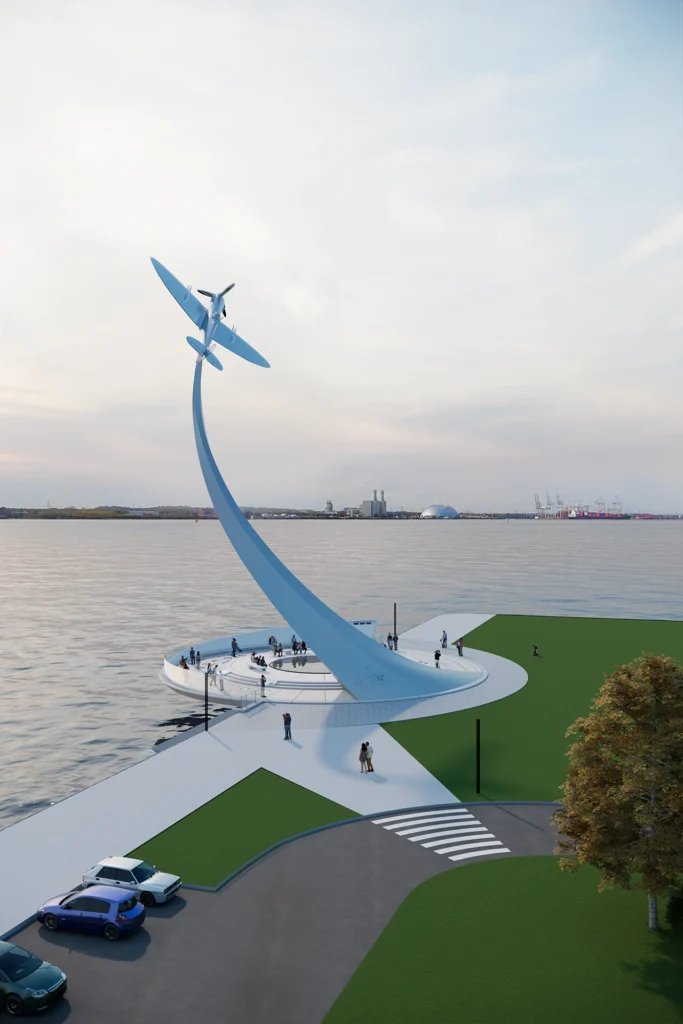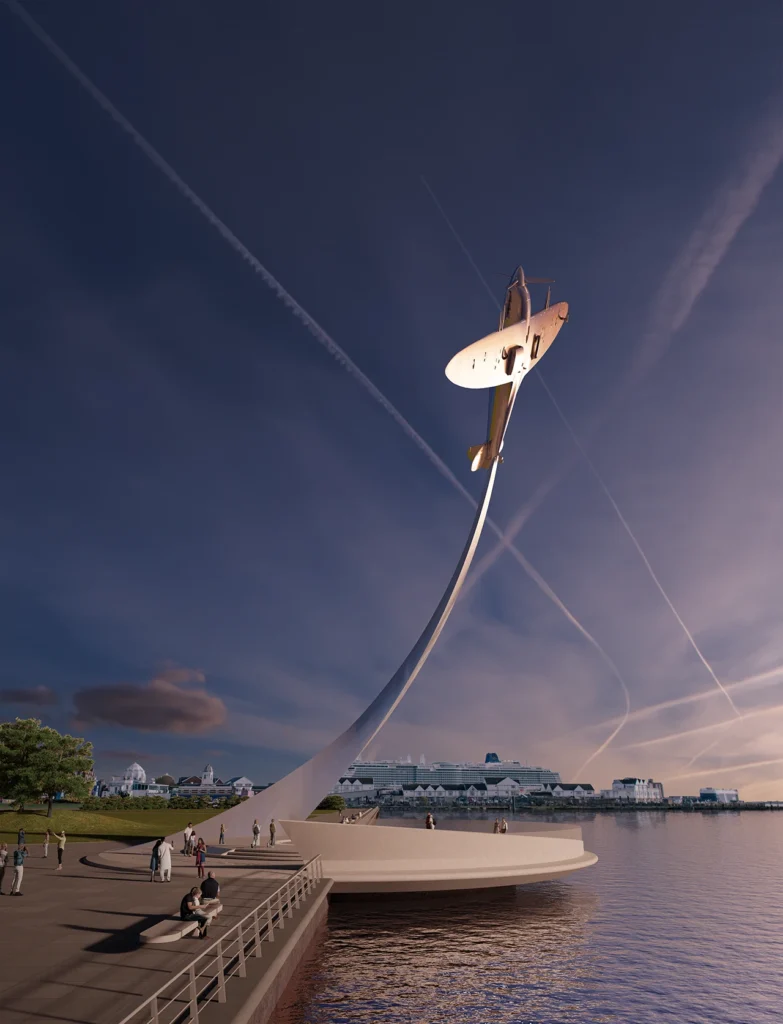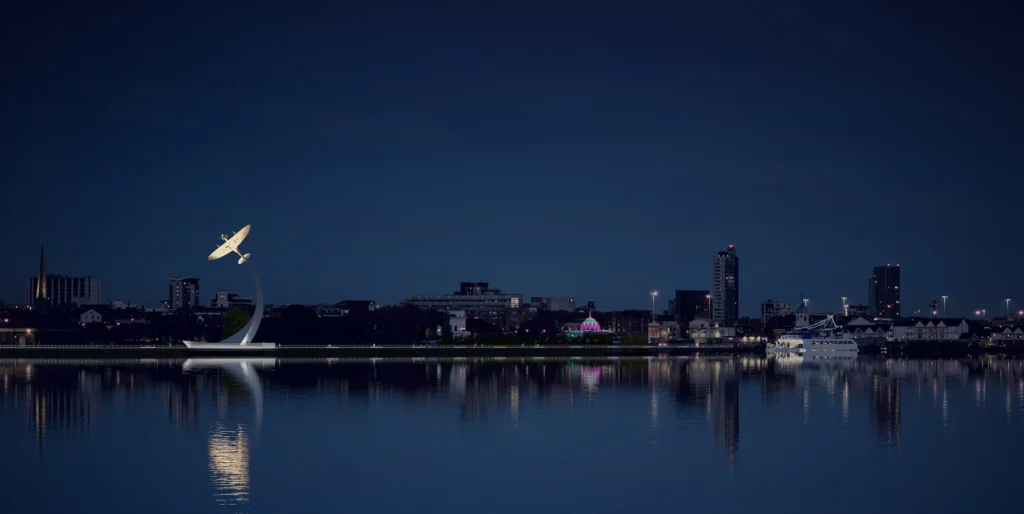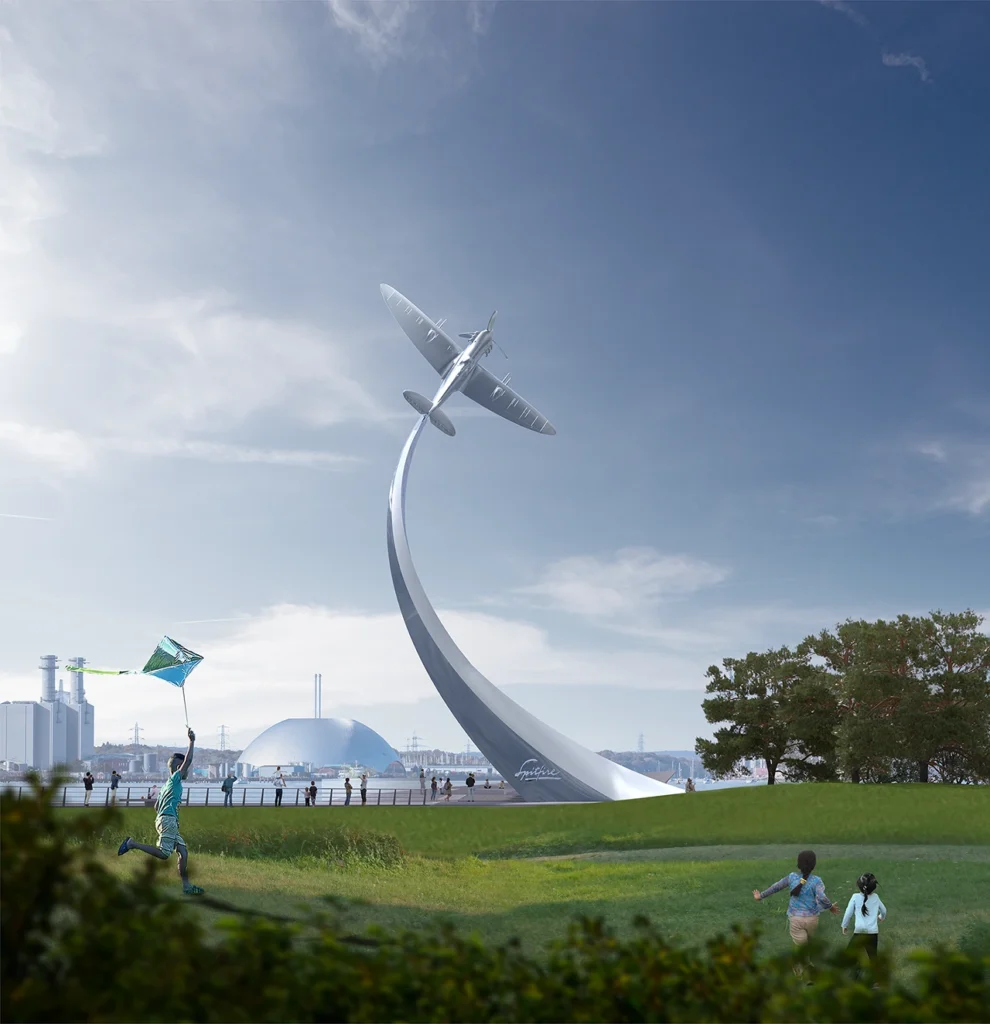The National Spitfire Monument, designed by Nick Hancock Design Studio for the National Spitfire Project, is a bold tribute to Southampton’s aviation legacy. Once completed, this monumental structure will celebrate the city’s pivotal role in developing the legendary Spitfire aircraft, a symbol of British innovation and heroism during World War II.
At the heart of the monument’s design is the Roundel base, featuring a captivating reflection pool, or “sky mirror.” Measuring 10 meters in diameter and 25mm deep, this dynamic feature is designed to reflect light and colour from the sky and surroundings. The pool creates joy and interaction as visitors move around, making the experience changeable and immersive. The pool is the central point for people engaging with the monument, adding power and serenity to their visit.
The monument’s aerodynamic design, inspired by the Spitfire’s sleek lines, creates a powerful visual impact. The towering steel structure will be instantly recognizable, drawing visitors worldwide. Standing tall within Mayflower Park, the monument is set to become a landmark in Southampton’s skyline, connecting the city’s rich maritime and aviation history.
Initially planned for Town Quay in 2011, the monument was relocated to Mayflower Park in 2014. This new location provides stunning waterfront views and aligns with the city’s regeneration efforts, creating flexibility for future parkland and waterfront development around the monument.
Once completed, the monument will be the tallest steel sculpture in the world, standing as an international symbol of pride and recognition for Southampton. More than just a monument, it honours the legacy of the Spitfire and its role in defending British skies during World War II.
The reflection pool will be a key aspect of the monument’s experience. With its interactive, reflective nature, it will capture attention and engage visitors in ways that resonate in the age of social media, creating as much excitement as the mast and plane themselves.
This monumental project promises to draw thousands of visitors annually, becoming a cultural and tourist icon. Its location in Mayflower Park encourages people to explore the city’s aviation heritage while enjoying its natural beauty and recreational activities. The monument will honour Southampton’s past and stimulate local economic growth, enhancing foot traffic and supporting nearby businesses.
As Southampton continues to evolve, the National Spitfire Monument will serve as a powerful reminder of the city’s contribution to British aviation, celebrating both the legacy of the Spitfire and the enduring spirit of innovation.
